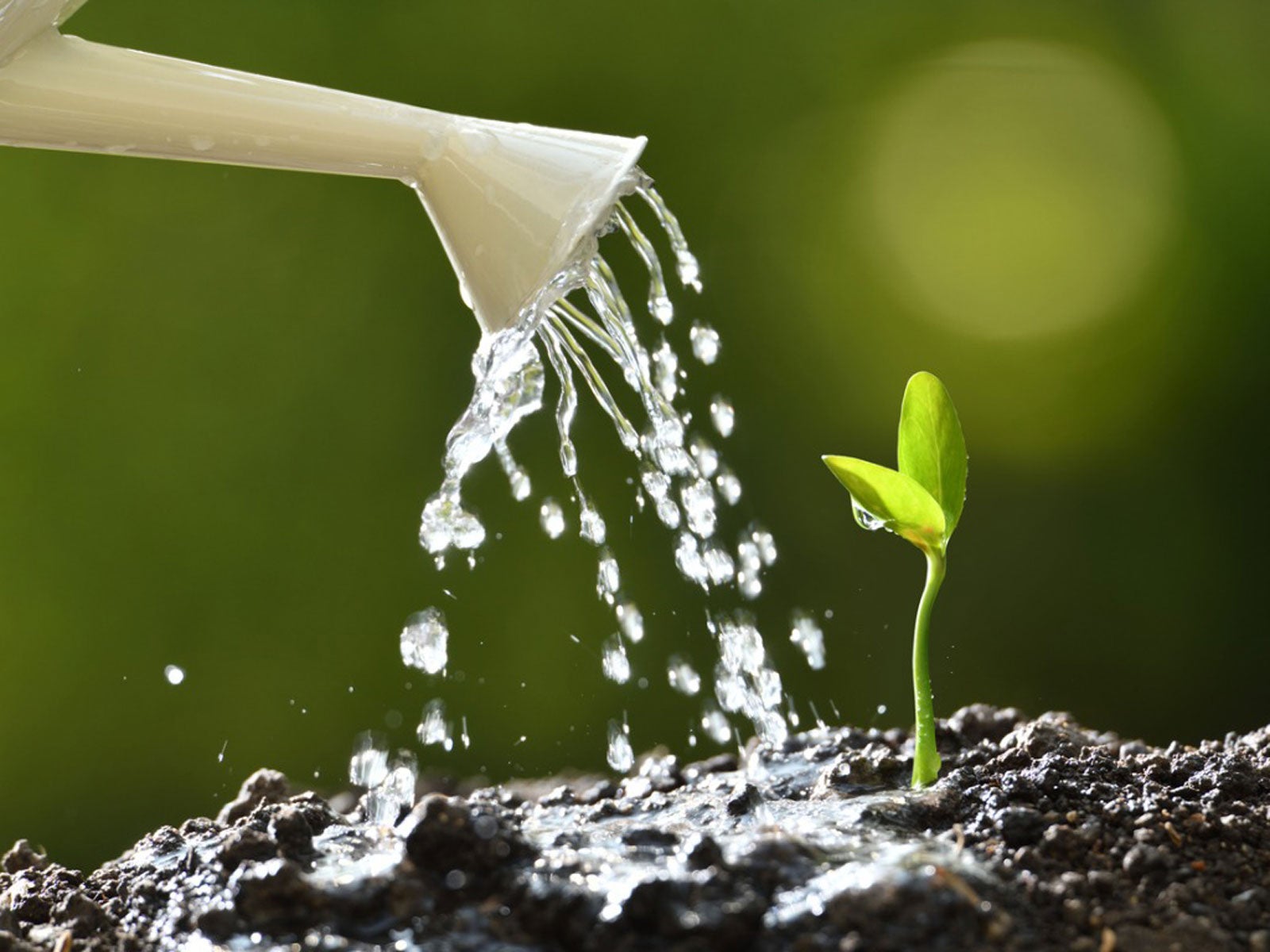Water saver for plants: Embark on a journey to conserve water while nurturing your garden’s beauty. Discover innovative techniques and products that optimize hydration, minimize waste, and promote plant health.
From mulch and drip irrigation to moisture meters and superabsorbent polymers, we delve into the world of water-efficient gardening, empowering you to create a sustainable oasis.
Water Conservation Techniques for Plants
Implementing water-saving practices in plant care is crucial for sustainable gardening and preserving water resources. By adopting efficient watering techniques, you can maintain healthy plants while minimizing water usage.
Mulching
Mulching involves spreading a layer of organic material, such as bark chips, compost, or straw, around the base of plants. This layer acts as a protective barrier that reduces evaporation, suppresses weeds, and regulates soil temperature.
Drip Irrigation
Drip irrigation systems deliver water directly to the roots of plants through a network of tubes or emitters. This method minimizes water loss through evaporation and ensures efficient water delivery, resulting in healthier plants with reduced water consumption.
Rainwater Harvesting
Collecting rainwater in barrels or cisterns is an effective way to conserve water for gardening. Rainwater is naturally soft and free of chemicals, making it ideal for plant irrigation.
Water-Saving Devices
Soaker hoses and moisture meters are valuable tools for conserving water while watering plants. Soaker hoses deliver water slowly and directly to the soil, reducing evaporation. Moisture meters help determine the soil’s moisture level, preventing overwatering.
Adjusting Watering Schedules
Watering schedules should be adjusted based on plant needs and environmental conditions. Drought-tolerant plants require less frequent watering, while newly planted or container plants may need more frequent watering. Factors such as temperature, humidity, and soil type also influence watering needs.
Types of Water-Saving Products for Plants: Water Saver For Plants
Water-saving products can help gardeners reduce their water usage while maintaining healthy plants. These products come in various forms, each with its advantages and disadvantages.
Moisture-Retentive Soils
Moisture-retentive soils are designed to hold water more effectively than traditional potting mixes. They typically contain organic matter, such as peat moss or coconut coir, which acts like a sponge, absorbing and releasing water as needed.
- Advantages: Reduced watering frequency, improved water retention, and better root development.
- Disadvantages: Can be more expensive than traditional potting mixes, may become compacted over time, and may not be suitable for all plant species.
Superabsorbent Polymers
Superabsorbent polymers (SAPs) are synthetic materials that can absorb and hold large amounts of water. They are often used as soil amendments to improve water retention and reduce watering frequency.
- Advantages: Significant water savings, reduced leaching of nutrients, and improved plant growth.
- Disadvantages: Can be expensive, may break down over time, and may not be biodegradable.
Water-Saving Pots
Water-saving pots are designed to minimize water loss through evaporation and runoff. They often have features such as built-in reservoirs, self-watering systems, or porous materials that allow for slow water release.
- Advantages: Reduced watering frequency, improved water conservation, and less risk of overwatering.
- Disadvantages: Can be more expensive than traditional pots, may not be suitable for all plant species, and may require more maintenance.
The choice of water-saving product should be based on the specific plant species, growing conditions, and individual preferences. It is important to carefully consider the advantages and disadvantages of each product to determine the best option for each situation.
Design Considerations for Water-Efficient Gardens

Creating a water-efficient garden requires careful planning and design. By implementing certain strategies, you can significantly reduce water consumption while maintaining a thriving landscape.
Drought-Tolerant Plants, Water saver for plants
Selecting drought-tolerant plants is crucial for water conservation in gardens. These plants have adapted to arid environments and require less frequent watering. Some examples include succulents, cacti, lavender, rosemary, and yucca.
Grouping Plants
Grouping plants with similar water needs together helps optimize irrigation. Place plants that require more water in areas closer to the water source, while drought-tolerant plants can be situated in drier zones.
Raised Beds
Raised beds elevate plants above ground level, improving drainage and aeration. This reduces waterlogging and allows water to penetrate the root zone more effectively, minimizing evaporation.
Vertical Gardens
Vertical gardens utilize vertical space to grow plants, reducing the surface area exposed to evaporation. They are ideal for small spaces and can significantly reduce water usage compared to traditional gardens.
Mulched Pathways
Mulching pathways with organic materials like bark or compost helps retain soil moisture by reducing evaporation. It also suppresses weeds, further conserving water.
Xeriscaping
Xeriscaping is a landscaping technique that focuses on using drought-tolerant plants and minimizing water usage. It involves careful plant selection, efficient irrigation systems, and the use of hardscaping elements like rocks and gravel.
Companion Planting
Companion planting involves strategically placing plants that benefit each other. For example, planting nitrogen-fixing plants near water-intensive plants can reduce the need for fertilizers and, consequently, water usage.
